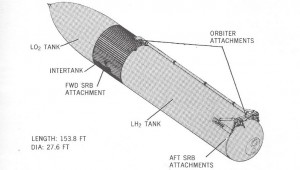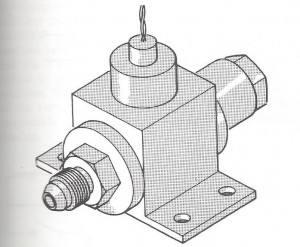Space Shuttle Challenger
 Figure 1. Space shuttle external tank.
|
The Space Shuttle Challenger exploded 73 seconds after liftoff on January 28, 1986. The cause of the explosion was determined to be an O-ring failure in the right-side solid rocket booster. Cold weather was a contributing factor. The shuttle had never been launched at a temperature below 53 degrees Fahrenheit – the temperature on the morning of the launch was just below freezing at 29 degrees Fahrenheit. The cold temperatures stiffened the rubber O-rings and prevented them from properly sealing as the booster pressurized and expanded. The leaking hot gases eventually burned through the external fuel tank shown in Figure 1, causing it to explode.
Test data from prior launches had warned of this possibility, but the results went largely ignored because of what was thought of as the very robust design of the O-ring sealing system. After the explosion, the design of some other systems also received added scrutiny to try and reconcile seemingly contradictory engineering analyses with actual field experience. For example, it was found that the ullage (gas above the liquid) pressure sensors for the main liquid oxygen tank had previously failed laboratory hardware acceptance tests designed to simulate launch environment conditions (vibration), yet under actual launch conditions the sensors performed reliably.
A schematic of a liquid oxygen ullage pressure sensor is shown in Figure 2. Examination of the failed test hardware, analysis of the environmental vibration testing data, and comparison to actual launch conditions revealed that the damage caused during testing far exceeded the design margins for the sensor. And thus explained why the design survived launch so well, yet failed the laboratory testing.

